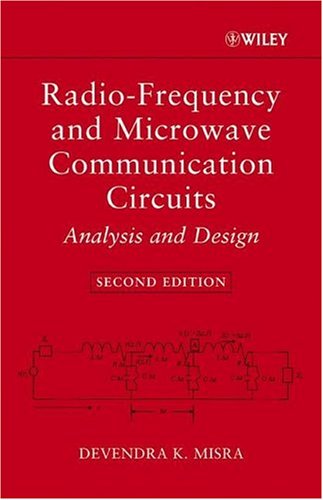

Most ebook files are in PDF format, so you can easily read them using various software such as Foxit Reader or directly on the Google Chrome browser.
Some ebook files are released by publishers in other formats such as .awz, .mobi, .epub, .fb2, etc. You may need to install specific software to read these formats on mobile/PC, such as Calibre.
Please read the tutorial at this link. https://ebooknice.com/page/post?id=faq
We offer FREE conversion to the popular formats you request; however, this may take some time. Therefore, right after payment, please email us, and we will try to provide the service as quickly as possible.
For some exceptional file formats or broken links (if any), please refrain from opening any disputes. Instead, email us first, and we will try to assist within a maximum of 6 hours.
EbookNice Team

Status:
Available4.7
21 reviewsIn the areas of telemetry, remote monitoring, remote process control, and most significantly wireless communication, radio-frequency and microwave circuits play an elemental role. As the superior performance of RF circuits over infrared technology becomes increasingly clear, a wide array of applications is emerging, from cordless computer keyboards to cell phones. Now in a comprehensively updated second edition, Radio-Frequency and Microwave Communication Circuits considers circuits within the broad context of communications systems. An ideal entry point for both practicing engineers and students studying or transitioning into the high-tech wireless field, this volume does not require prior in-depth knowledge of electromagnetic fields.
The author provides a thorough overview of frequency bands, RF and microwave devices, and applications. The Second Edition includes new or enhanced coverage of transmitters and receivers, digital modulation and demodulation, electromagnetic waves, waveguides including electromagnetic waves and Maxwell equations, oscillator design, and FET mixers. Other key topics covered include:
Extensive appendices include logarithmic units, design equations for selected transmission lines, and a list of commonly used abbreviations. An expanded selection of class-tested problem sets at the end of each chapter--275 problems in all--and more than 150 solved, real-world examples with step-by-step explanations are provided. Valuable supplementary resources are also available: a solutions manual, as well as material on CAD techniques that can be accessed at an FTP site. This Second Edition is an ideal introduction for students and a vital reference for practitioners of this fast-growing and in-demand technology.